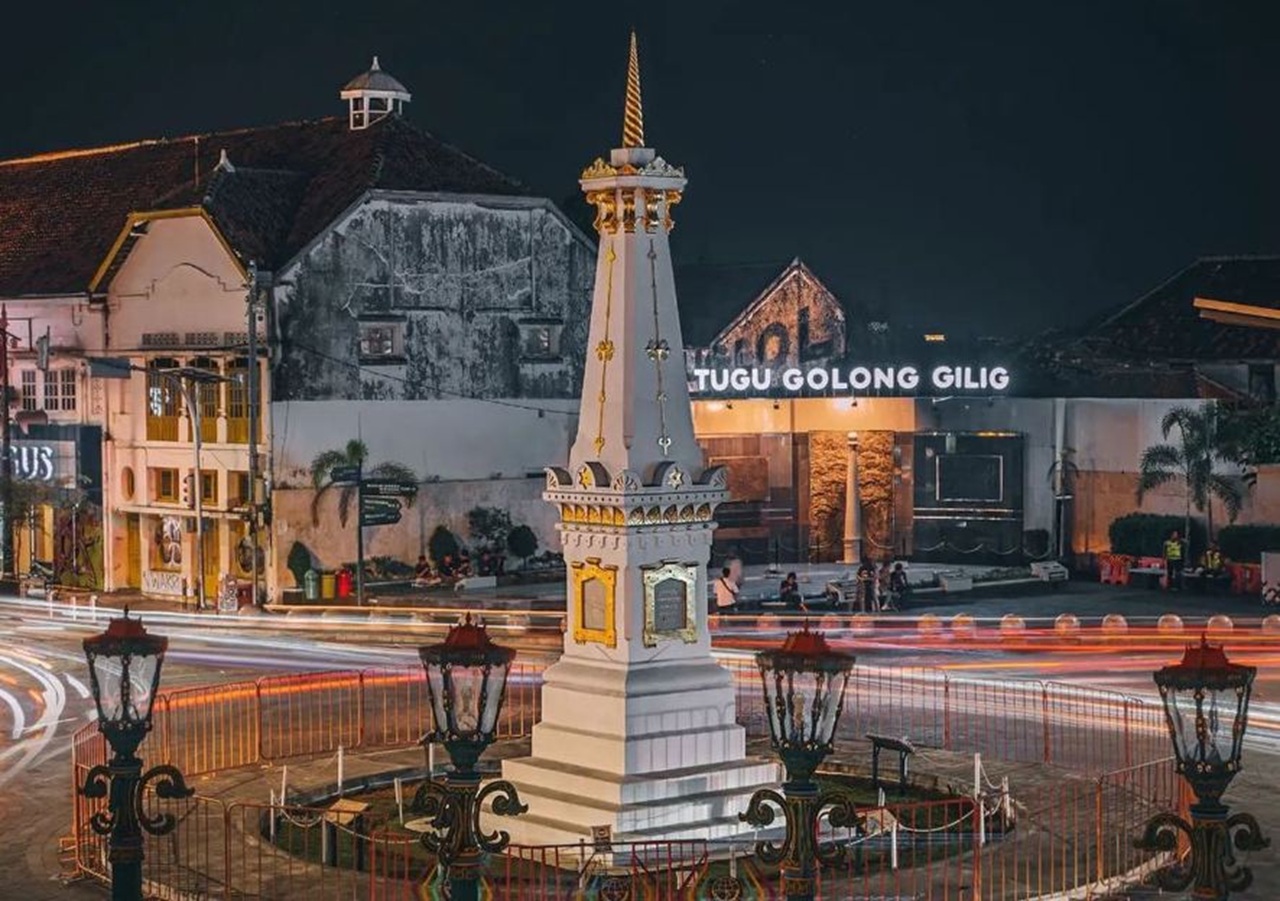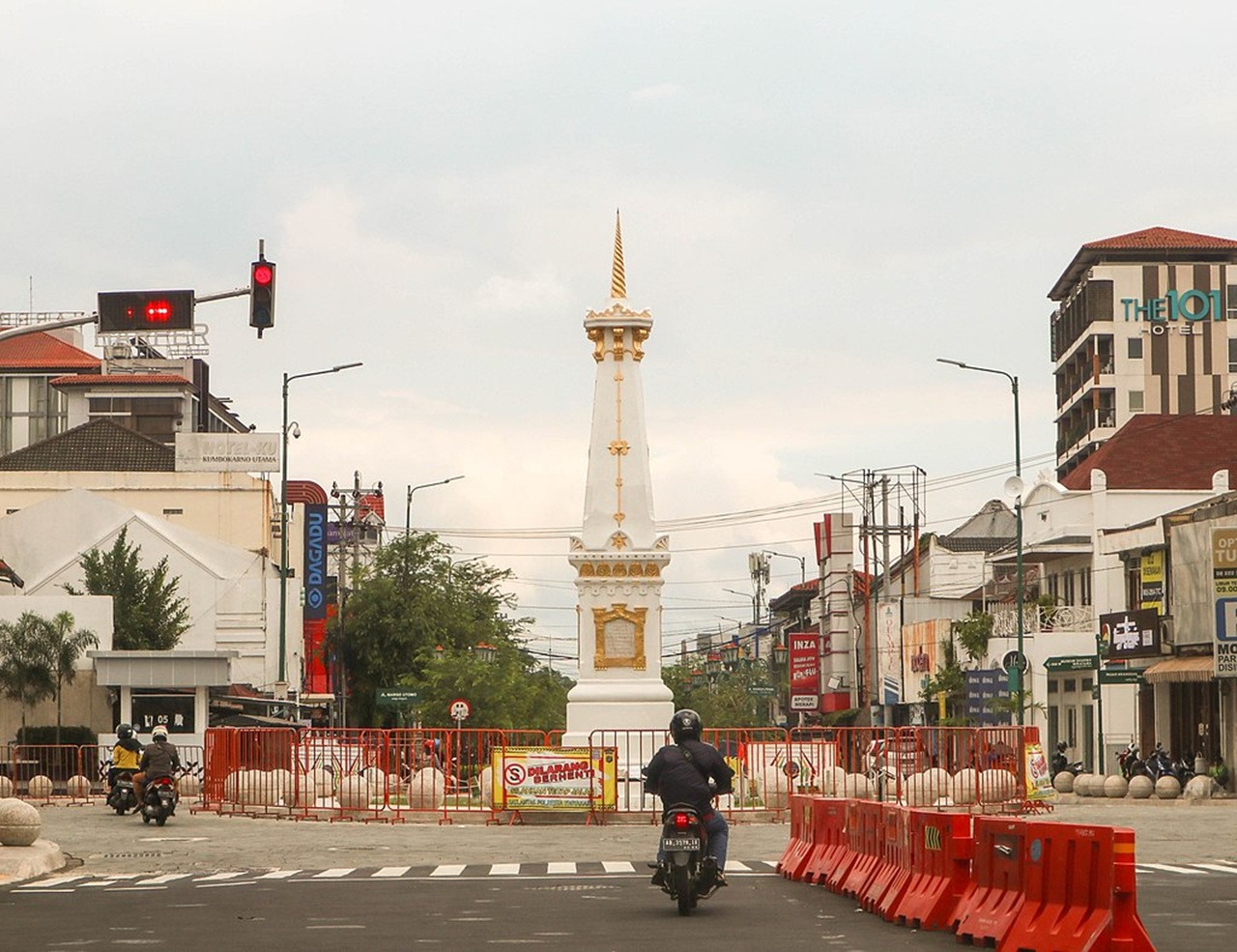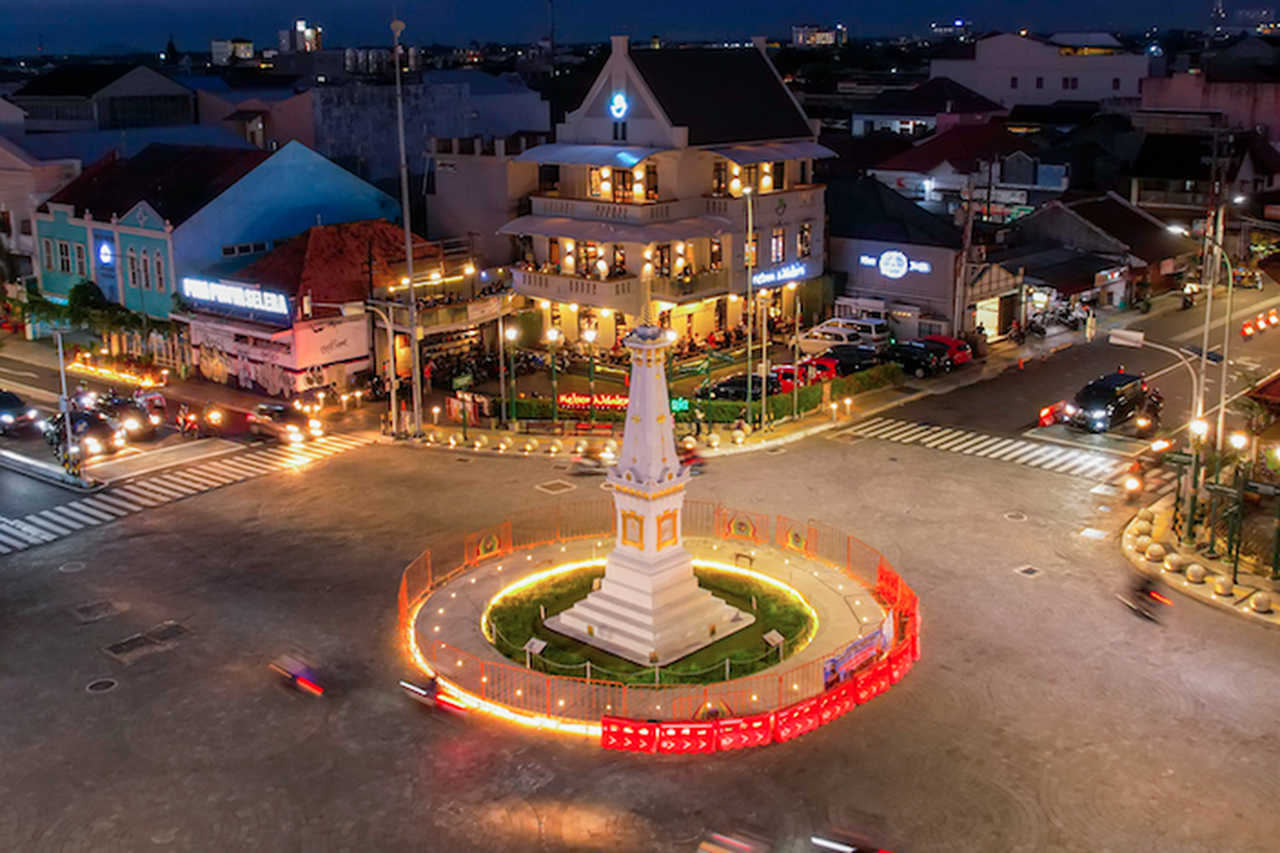Tugu Jogja is a monument located at the intersection of Jalan Jenderal Sudirman, Jalan Margo Utomo, Jalan Mangkubumi, and Jalan Dipenogoro, which is used as a landmark of the City of Yogyakarta. Until now, Tugu Jogja, which has symbolic value as an imaginary line connecting Parangtritis Beach, the Yogyakarta Palace, and Mount Merapi, has become one of Yogyakarta's typical tourist attractions.
Tugu Jogja is a monument which is used as a landmark of the City of Yogyakarta
Tugu Jogja is also known as Tugu Pal Putih, where pal means monument, and because the color of the paint used since long ago is white. Tugu Jogja has a long shape and a pointed top.
Tugu Jogja is a replacement for Tugu Golong Gilig, built in 1755. The name Golong Gilig refers to the initial shape of the monument which was a cylinder (golong) with a round top (gilig), a symbol of the philosophy of "Manunggaling Kawula Gusti" or the unity of the people with their king and humans with the Creator.

The Golong Gilig Monument collapsed due to an earthquake on June 10, 1867, and it was only during the reign of Sri Sultan Hamengkubuwono VII that this monument was rebuilt, inaugurated on October 3, 1889, which was then called the White Pal Monument. The reconstruction of this monument changed several things, in addition to the shape, the height of the monument which was originally 25 meters, was shortened to 15 meters.
In 2012, the renovation of the monument was completed. The painting of some of the monument's ornaments was done with a yellow color containing 22-carat gold, and a small park was also created around the monument.

Dutch Involvement
The Dutch government was involved in rebuilding the monument during the reign of Sri Sultan Hamengkubuwono VII. J.W.S. Van Brussels, who at that time served as Head of the Public Works Department, and Patih Danureja V, who was a supervisor from the Palace, carried out the reconstruction.
The government then named the monument the White Pal Monument or De Witte Paal. There is another interpretation that the name Tugu Pal Putih was given by the Dutch government as a tactic to break the unity of the people with their king, but this effort was unsuccessful.




 Annissa Wulan
Annissa Wulan
 Feb 24, 2025
Feb 24, 2025